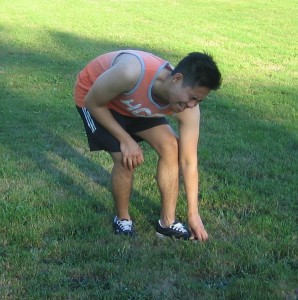Sever’s disease is a usual cause of heel discomfort or pain among active children. The condition arises once the growth plate of the heel is damaged by strong forces during early adolescence, particularly the growth spurt period where children grow rapidly. The growth spurt can start between the ages of 8-13 years for girls and 10-15 for boys.
What are the indications?
The child might start to limp while walking or runs awkwardly. If the child is instructed to rise on tip toes, the heel pain is intensified. Take note that the heel pain can be experienced in one or both heels.
Risk factors

- Tight calf muscles
- Diminished ankle dorsiflexion
- Abnormal hind foot movement
- Excessive weight bearing activities such as running
Management of Sever’s disease
The treatment for Sever’s disease is aimed on reducing the pain as well as reinstating the normal foot and leg biomechanics.
Similar with most injuries involving the soft tissue, the primary treatment includes rest, application of ice and protection. During the initial phase, the individual could not walk without triggering pain. The initial objective is to rest from any activities that triggers pain.
The application of ice is a simple and beneficial remedy to lower the pain and inflammation. Place the pack 20-30 minutes every 2-4 hours throughout the initial phase or if the site of injury is warm. Many children can be given a pain medication.
When supporting and protecting the heels, use shock absorbing heel cups or a soft orthotic variant. Kinesio foot taping can also help in providing relief from the pain. In addition, poorly designed shoes increase the risk for injury. The doctor might recommend suitable and well-supportive footwear to use.
